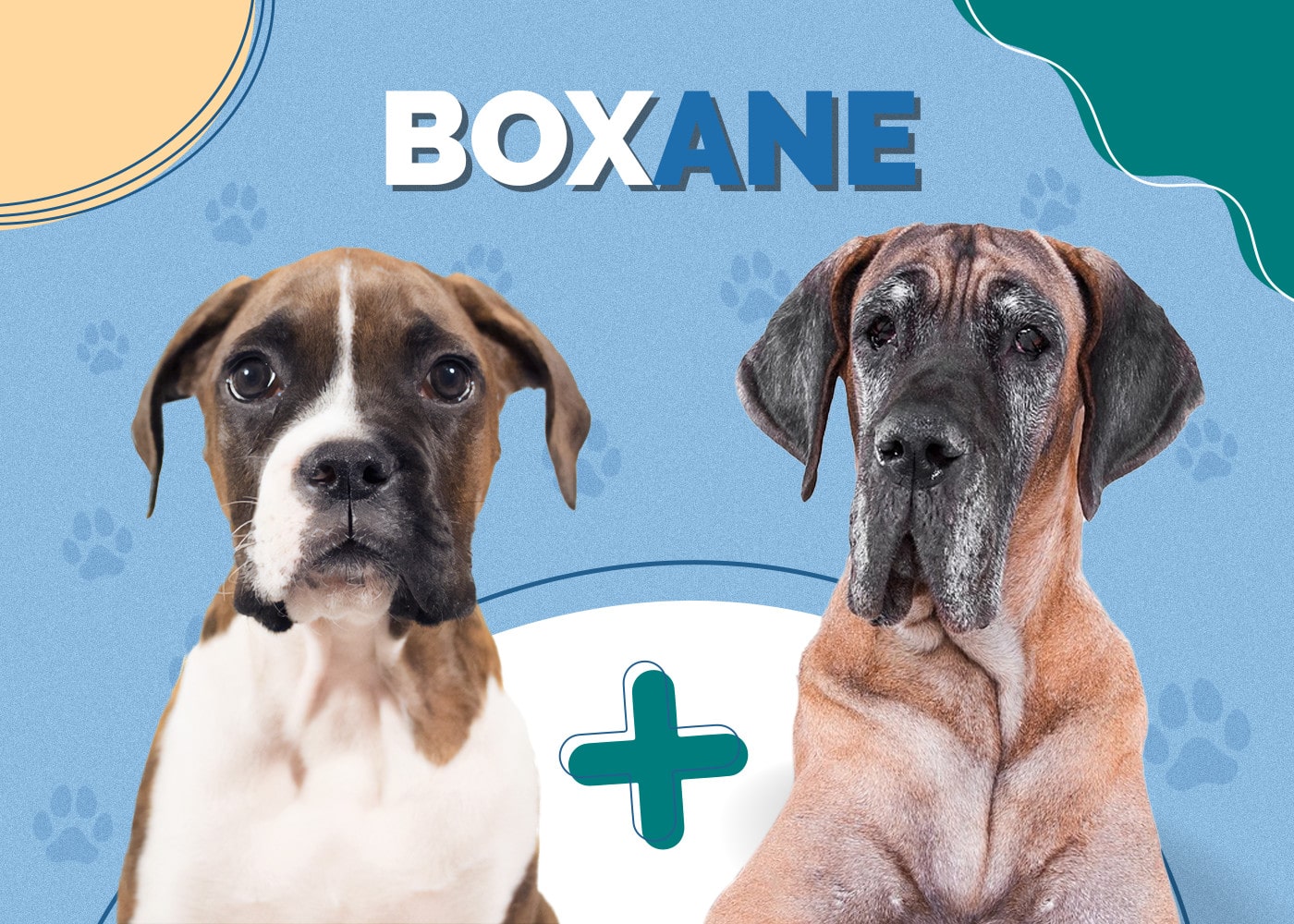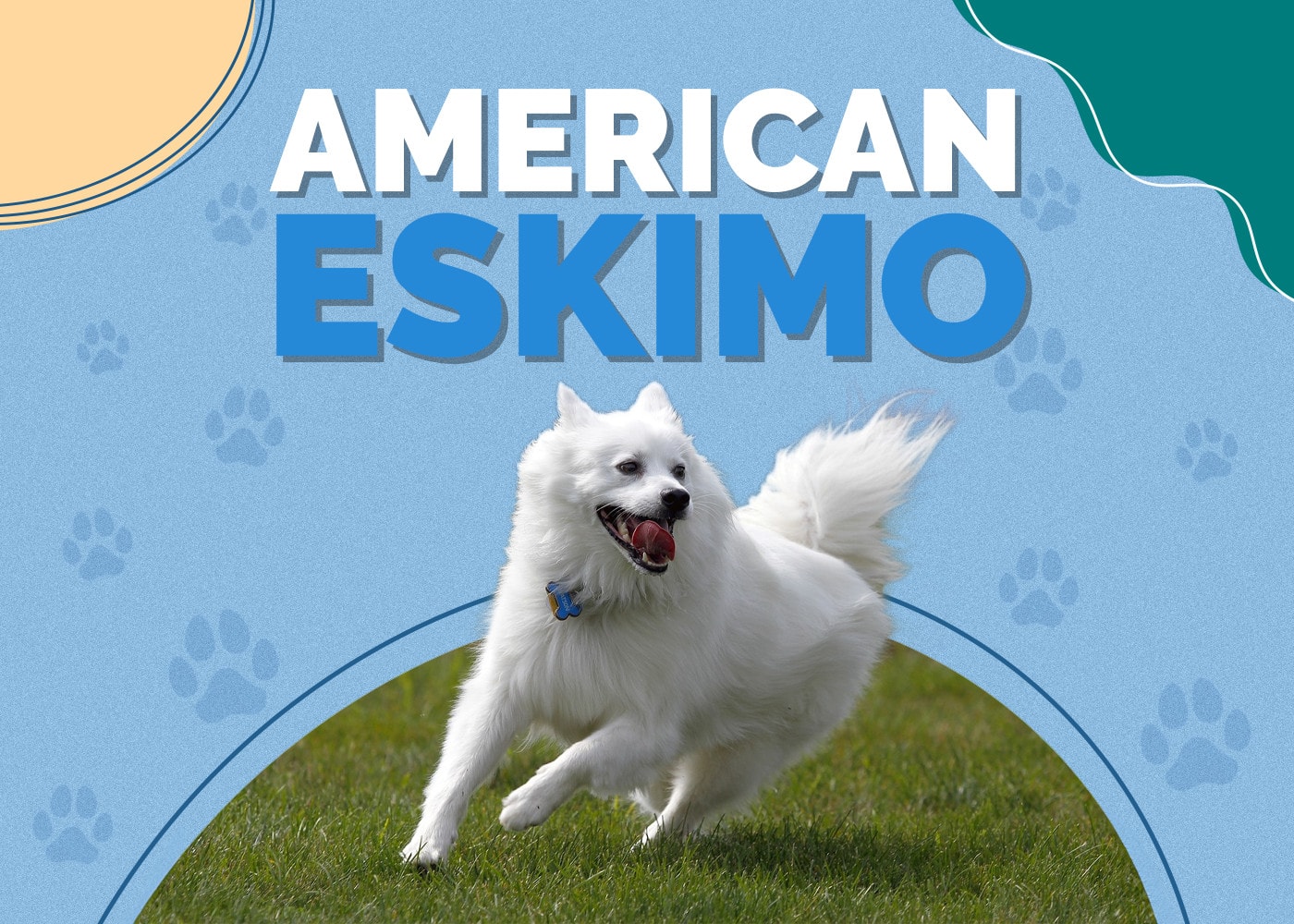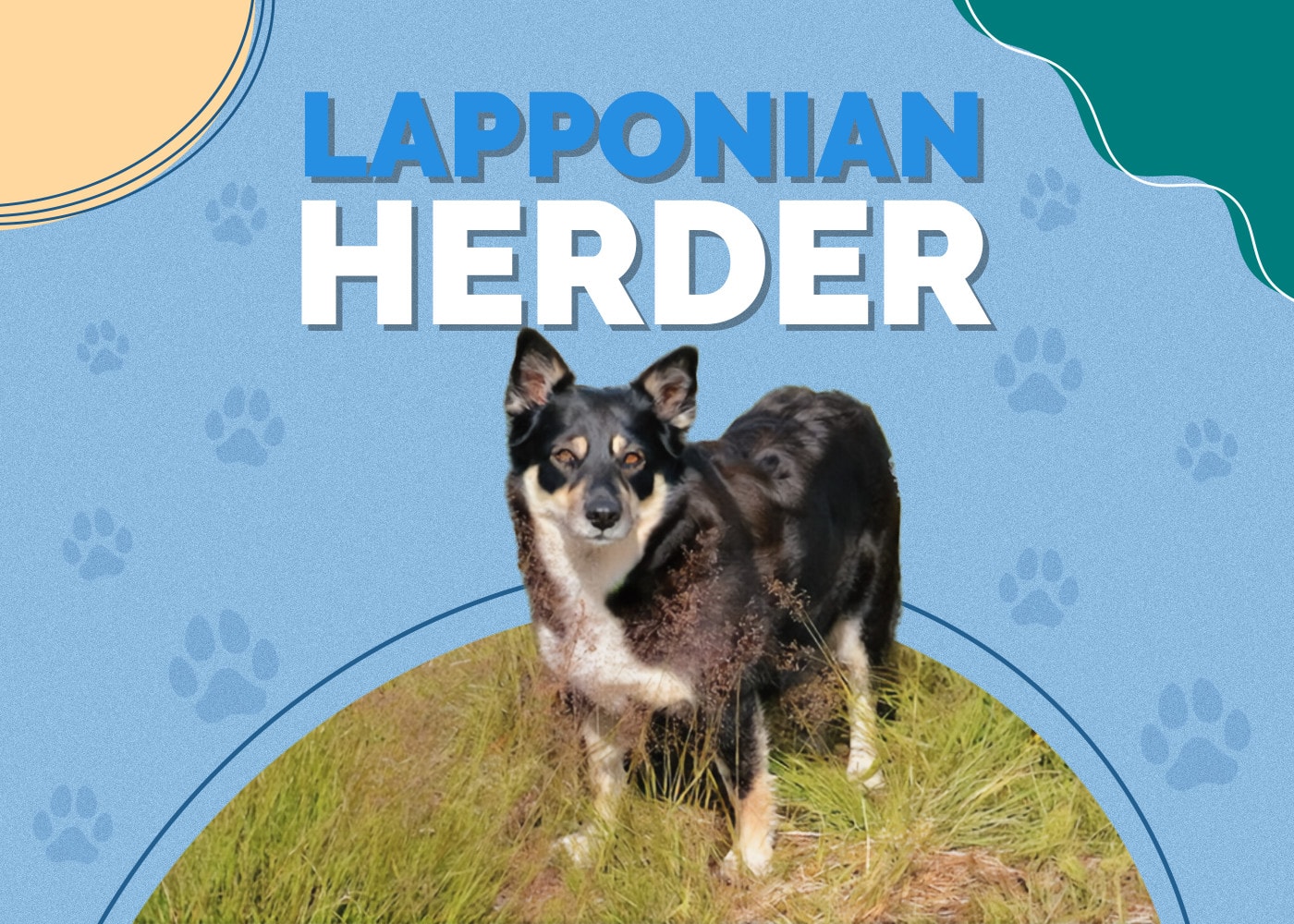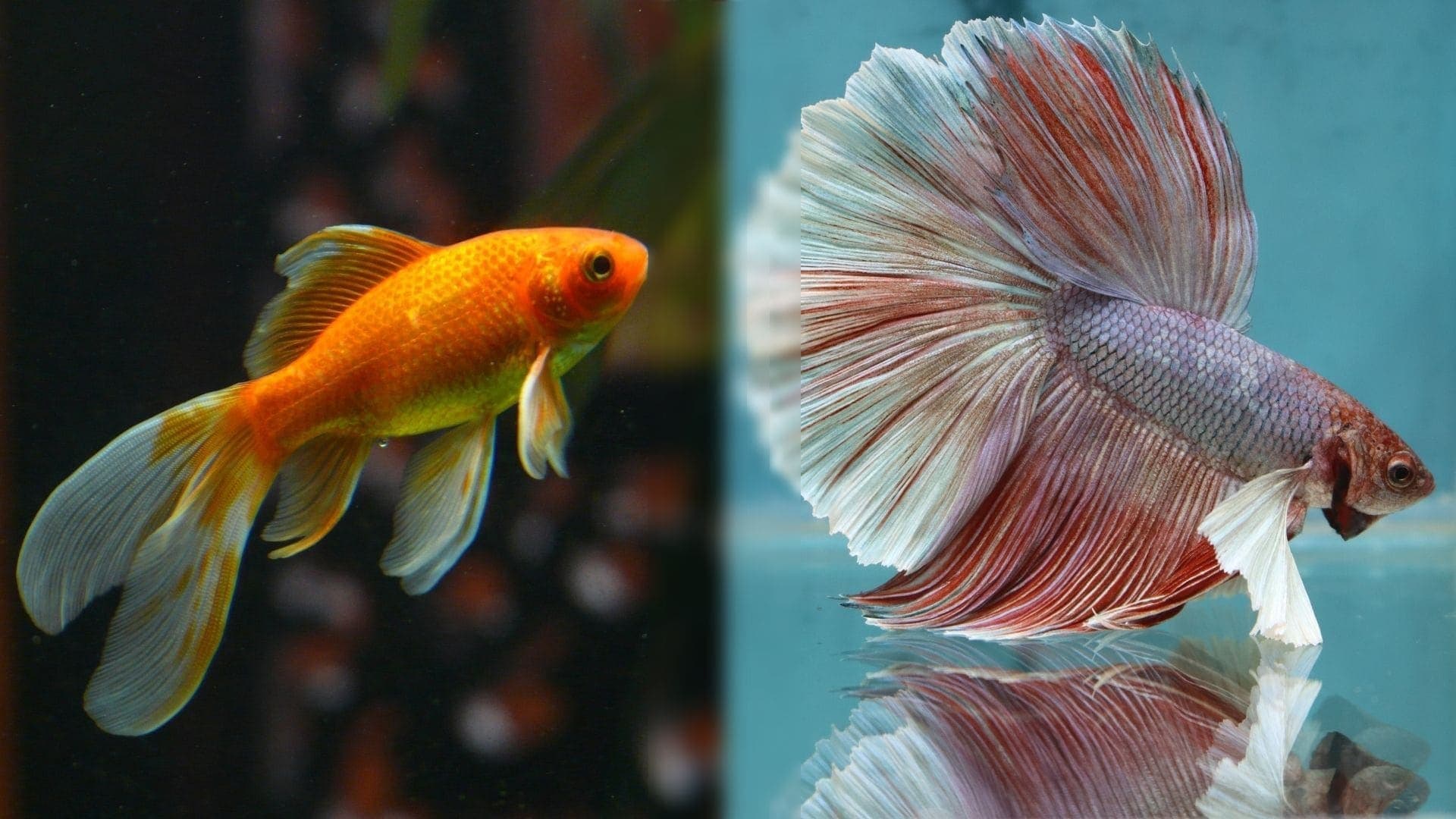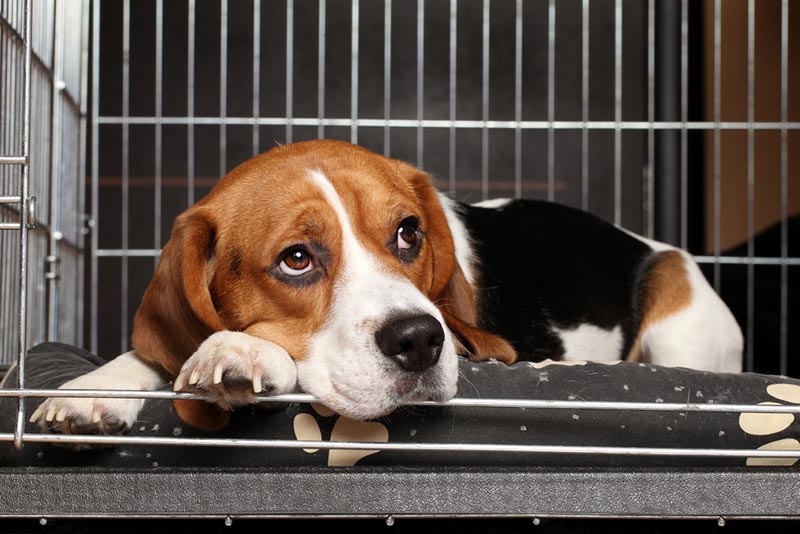Karelian Bear Dog | Breed Info: Pictures, Personality & Facts

Updated on
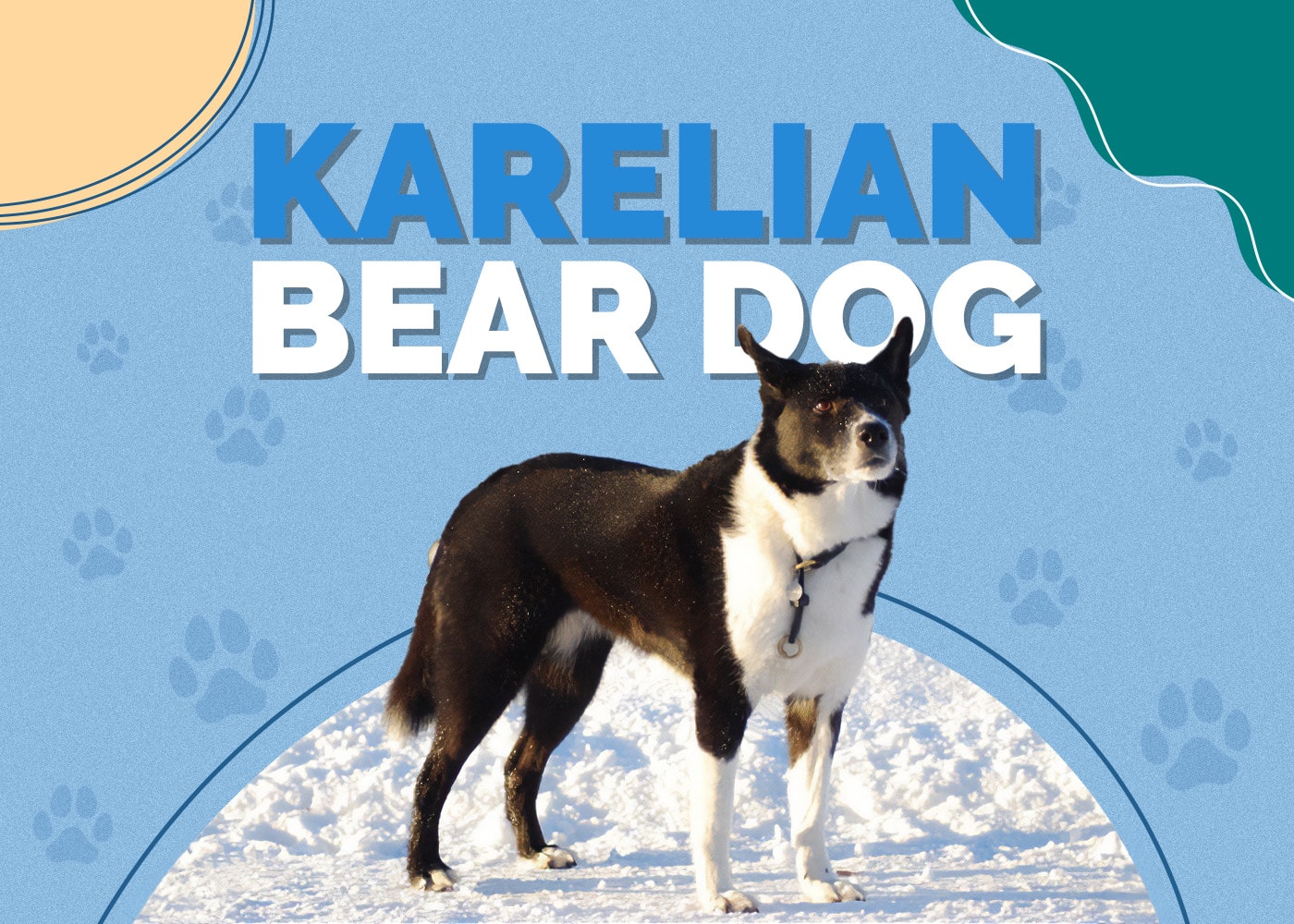
| Height: | 19–23.5 inches |
| Weight: | 44–49 pounds |
| Lifespan: | 11–13 years |
| Colors: | White and black |
| Suitable for: | Active families, those looking for a low-shedding dog |
| Temperament: | Loyal, willful, affectionate, intelligent, spirited |
You may not have heard of the Karelian Bear Dog here in the United States. However, this breed is quite popular in Finland, where it is one of the most popular dogs in that country. This pooch is appropriately named because of its fearless and courageous nature. It’s a must-have trait with a pup whose purpose is big game hunting.
The breed is an ancient one, going back over 2,000 years. The Karelian Bear Dog traces its origins to a Komi Hunting Spitz. Like others of this type, this pooch is sometimes aloof, a characteristic you may notice with other pups like the Chow Chow. It is an independent canine, that not surprisingly, tolerates the cold quite well.
The Karelian Bear Dog carries himself well and exemplifies confidence. It is a muscular canine with the energy and stamina for the hunt. They also have a stubborn streak that their job and lifestyle encourage. This pup has an unmistakable presence that is evident when you meet them for the first time.
Karelian Bear Dog Puppies
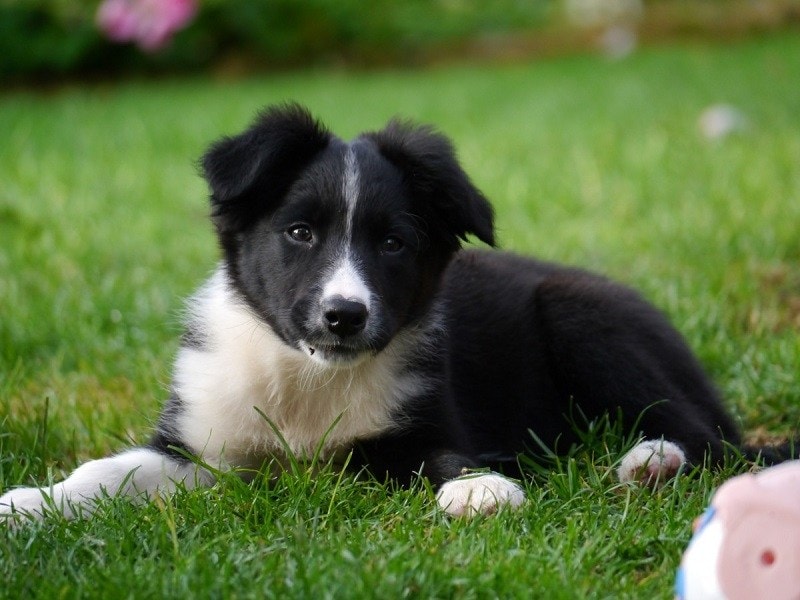
The description of the Karelian Bear Dog provides some valuable clues about what you can expect if you choose to get one. Their independence makes them a poor choice for the novice pet owner. They need someone who can take control of training and build trust in the relationship. Like many hunting dogs, the Karelian Bear Dog is often vocal, especially when it gets excited.
However, this pooch is something of a softie, being sensitive and needy for attention. It’s not a dog to leave alone in the backyard. Puppies can be nippy, so you must work on their canine manners from the start. The Karelian Bear Dog has a strong prey drive, which is expected in a pooch with his history. It also has high wanderlust potential. Remember that they are fierce hunters and will follow the chase.
This pup isn’t fond of strangers, making early socialization imperative. Owners should introduce the Karelian Bear Dog to other people as a puppy to cultivate its social skills. Surprisingly, they won’t rush up to greet others, even as a pup. That’s the Spitz background. However, they are affectionate and loyal to their family.
3 Little-Known Facts About the Karelian Bear Dog
1. The Karelian Bear Dog lives up to his name.
It’s tempting to think that the name of the Karelian Bear Dog is all-show. However, don’t tell that to the Washington Department of Fish and Wildlife. The agency recruited this breed to control nuisance mountain lions and bears in the state. In their native Finland, they also go after elk. Talk about a tough pooch!
2. The Karelian Bear Dog signals the presence of prey vocally.
Some hunting dogs will point or flush game out of the brush, not so with the Karelian Bear Dog. They prefer to let their companions know by barking. Being vocal is instinctive for this fearless canine.
3. The Karelian Bear Dog almost became extinct.
World War II was a terrible time for everyone, including dogs living in Europe. The Karelian Bear Dog, along with other breeds like the Vizsla, was hit hard. The pups we see today are the result of the breeding of 43 out of the 60 that remained.
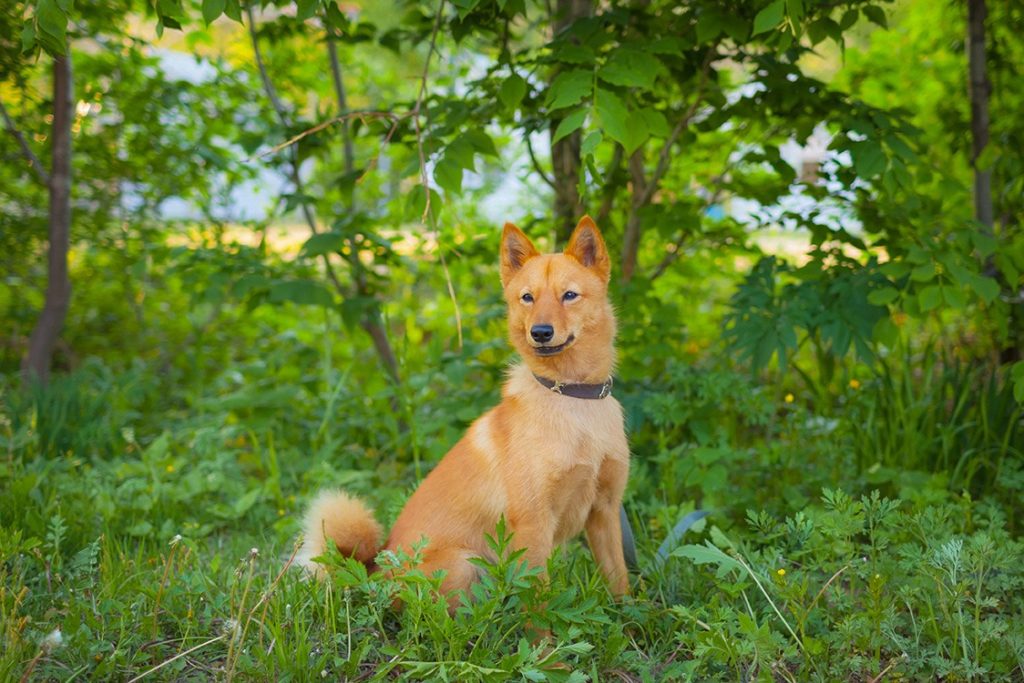
Temperament & Intelligence of the Karelian Bear Dog 🧠
As you’ve probably surmised, the Karelian Bear Dog takes a special individual or family. It may prove challenging to have as a pet if you can’t give them the attention they need. This pup needs activity for both their physical and mental health. That’s the price of owning an intelligent canine. It is a playful pooch who takes the game seriously.
Are These Dogs Good for Families? 🏡
The Karelian Bear Dog can fare well with a family with kids, especially older children. We suggest teaching the little ones to respect their space and leave their food alone. However, it is an affectionate pet, nevertheless. Taking the time to build trust and bond with your pet will yield welcome rewards. Early socialization is the key to a healthy relationship.
Does This Breed Get Along with Other Pets? 🐶 😽
Many hunting dogs get along with others because they work in a group. That’s not the case with the Karelian Bear Dog, unfortunately. It is not dog-friendly. However, you can try socializing them but understand that you may have limited success. This pooch does best in a single-pet household. That includes cats, too.
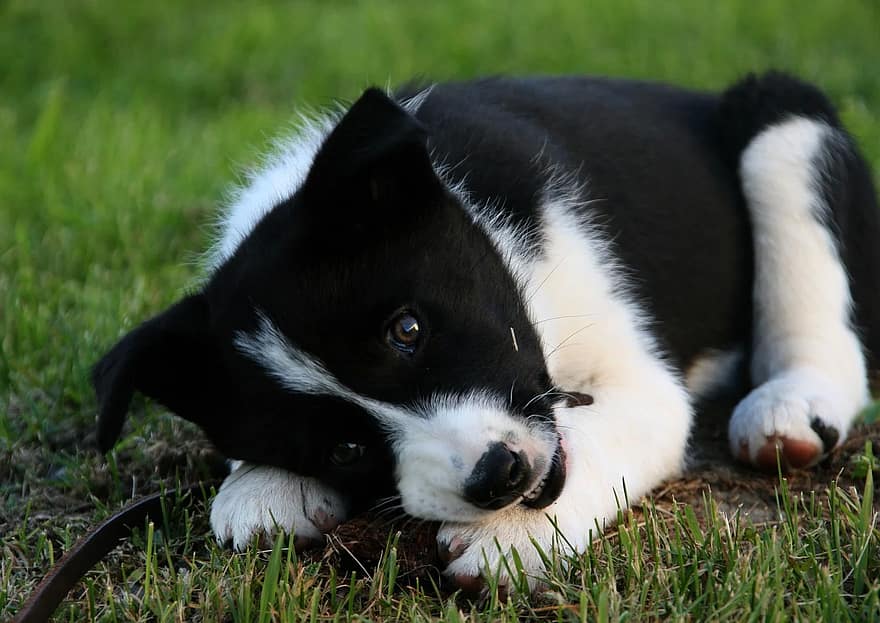
Things to Know When Owning a Karelian Bear Dog:
Owning a Karelian Bear Dog is a rewarding experience. Their unique personality will make every day different. Their independence helps. They take care of their needs to some degree, making it more manageable for you. However, there are a few more things you should know upfront before inviting this captivating pooch into your home.
Food & Diet Requirements 🦴
Make sure to feed your Karelian Bear Dog a food meant for medium-sized breeds. It’s essential to ensure proper development and adequate nutrition. Luckily, the high energy of this pup reduces the risk of weight gain. However, monitor their size and diet. Obesity is one condition where prevention is significantly easier than fixing the problem.
Exercise 🐕
The Karelian Bear Dog needs plenty of exercise to stay healthy. A daily walk will give you the chance to keep them active and cement your relationship with them. We urge you to keep them on their leash because of their keen prey drive. Unfortunately, they’re probably not the best pups to bring to the doggie park. Instead, a game of fetch will satisfy their desire to run and burn off some energy.
Training 🦮
The Karelian Bear Dog is intelligent and capable of learning. However, their willful streak will likely rear its ugly head. Avoid harsh reprimands and use positive reinforcement. This pup is quite sensitive. You can put their athleticism to good use by teaching them agility sports. It will give them enough mental stimulation to keep their mind occupied.

Grooming ✂️
The Karelian Bear Dog does shed but manages to keep its coat clean on its own. Weekly brushing with the occasional bath covers the basics for this pooch. This breed is prone to gum disease. Therefore, you should brush their teeth regularly for sound oral health. Also, check their ears and clean them as necessary. We also suggest trimming his nails frequently as they typically grow quickly.
Health and Conditions ❤️
The Karelian Bear Dog is a relatively healthy pooch. The primary concerns are issues that affect any breed of their size. We suggest only buying from responsible breeders who do the recommended health screening as a puppy with the follow-up tests done as he grows into an adult.
- Heat intolerance
- Ear infections
- Elbow dysplasia
- Hip dysplasia
- Progressive retinal atrophy (PRA)
- Gum disease
Male vs Female
You will have a delightful pet no matter what sex of Karelian Bear Dog you choose. Both are equally affectionate and willing to share their love. The size difference between males and females isn’t significant, either. Whichever one you get, we recommend spaying or neutering your pooch, following the advice of your veterinarian regarding the timing.
Final Thoughts
The Karelian Bear Dog is probably one of the most confident canines you’ll ever meet. Their courage is evident in their independence and reserved manner. While it is intense in play and hunting, its also a calm pooch that will enjoy spending time with you, whether you two are taking your daily walk or cuddling together on the sofa. This pup will make a wonderful pet for the right family.
See Also:
- Blue German Shepherd Dog Breed: Info, Pictures, & Traits
- Irish Mastiff (Irish Wolfhound & Mastiff Mix): Info, Pictures, Facts, Traits
Featured Image: Louise Ekeblad, Shutterstock




